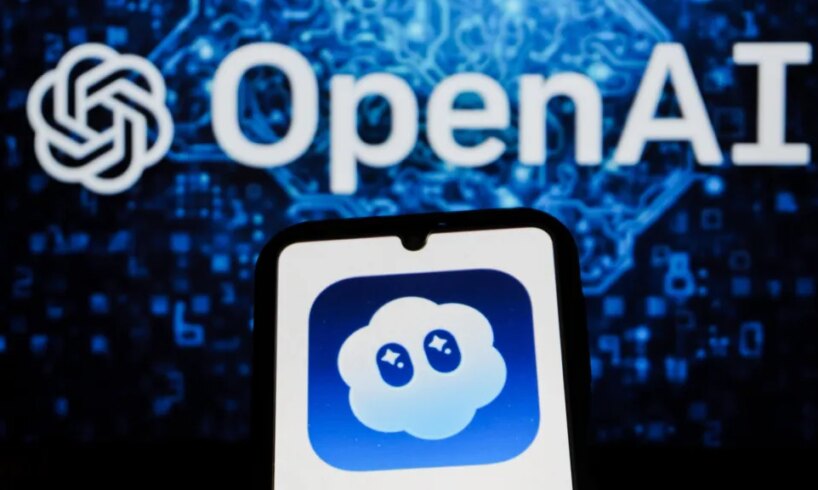
OpenAI launched Sora 2, its new social video app, on October 1. Within hours, the platform became flooded with AI-generated deepfakes of CEO Sam Altman himself stealing Nvidia GPUs from Target and asking viewers, “Are my piggies enjoying their slop?” while seemingly violating copyright laws within each video.
Five days later, at OpenAI’s Dev Day on October 6, the same company unveiled something fundamentally different: a serious, pragmatic platform for developers and business leaders to build useful applications directly inside ChatGPT.
Related Article Block Placeholder
Article ID: 324870
Two launches. Five days apart. One company. The instinct is to see these as contradictory. But what if they’re two prongs of the same strategy?
The real game: Owning intersection points
Here’s the truth about AI: the technology itself isn’t particularly differentiated anymore. LLMs have become an arms race nobody is winning. We get Veo 2, then Sora, then Veo 3, then Sora 2. There’s always another product or model months away that matches or exceeds the current leader.
ChatGPT became synonymous with AI itself in 2022. But brand recognition doesn’t equal market control. As AI utility moves beyond basic chat, OpenAI is losing ground. Claude owns coding now. Despite GPT-4 matching or exceeding Claude technically, Anthropic won that battle.
Smarter business news. Straight to your inbox.
For startup founders, small businesses and leaders. Build sharper instincts and better strategy by learning from Australia’s smartest business minds. Sign up for free.
By continuing, you agree to our Terms & Conditions and Privacy Policy.
So, to justify a $500 billion valuation, OpenAI needs to dominate across multiple fronts. It needs to own the intersection points where users and technology meet.
In a market where technical differentiation is temporary, owning the places where people access AI becomes everything. Dev Day and Sora aren’t contradictory moves – rather, they’re OpenAI racing to lock down three critical intersection points before competitors catch up.
Intersection one: The chat interface
ChatGPT was the first intersection point. The chat window became the default way people interact with AI. With 800 million weekly active users, OpenAI owns this space. It’s their foundation. But it’s not enough.
Intersection two: Developer infrastructure
Related Article Block Placeholder
Article ID: 324625
Dev Day revealed the second intersection point: the tools developers and business leaders come together to build AI applications.
OpenAI announced ChatGPT Apps, allowing developers to build interactive applications inside the interface. Unlike the GPT Store, which became a graveyard of under-monetised apps, ChatGPT Apps surface when users need them. Users say, “Figma, turn this sketch into a diagram”, and the app appears. This solves the distribution problem that killed previous attempts.
AgentKit, its toolkit for building AI agents, goes further. It includes visual design tools, embeddable chat interfaces, evaluation systems, and connectors for enterprise integration.
The numbers tell the story.
Developers using OpenAI’s tools doubled to four million. API usage jumped from 300 million to six billion tokens per minute in 2025. This isn’t just growth. It’s lock-in. When developers build on your platform and users access services through your interface, switching costs rise dramatically.
This is the same play Apple made with iOS, Microsoft with Windows, and Google with Search. OpenAI is positioning ChatGPT as the platform layer of the internet, the gatekeeper for how businesses reach customers and how users access AI services.
Intersection three: Social attention
Which brings us to Sora 2. Why launch a social video app that immediately fills with deepfakes and copyright violations?
Related Article Block Placeholder
Article ID: 322045
Look at how Sora 2 is structured. It’s not primarily a video generation tool like Midjourney. It’s built like a social platform, with sharing, following, algorithmic feeds, and the “cameo” feature letting users star in AI-generated content. It’s designed to compete with TikTok.
OpenAI is betting that social media’s next evolution is AI-generated content that’s personalised, interactive, and endlessly scalable. If it is right, getting there first matters more than getting there cleanly.
The deepfakes, the copyright chaos, the “AI slop” — these drive engagement, generate publicity, and rapidly stress-test what works in AI-native social. TikTok demonstrated that owning attention at scale is worth hundreds of billions. If AI-generated content becomes the next form of social entertainment, the company that owns that platform could dominate consumer AI.
But it’s not without risks.
When journalist Amanda Silberling tested Sora 2’s cameo feature, it generated a deepfake of her in her own bedroom, correctly guessing she was a Phillies fan from her IP address and ChatGPT history.
But risk may be the point. In a market where technical differentiation is temporary, owning distribution and attention becomes everything.
What this means
For Australian businesses navigating this landscape, OpenAI’s strategy offers a lesson in an arms race where technology parity arrives quickly, distribution and platform control become the differentiators.
The challenge is separating signal from noise. When companies flood the market with experimental consumer plays and serious enterprise tools at this pace, identifying real value becomes difficult.
Related Article Block Placeholder
Article ID: 324710
The answer requires looking beyond technology to the business model underneath. Focus on where you’re building dependency, not just capability. The companies that survive the inevitable correction will be those that created genuine lock-in through distribution, not just impressive demos.
The path forward
We should be optimistic about AI’s potential while remaining sceptical about valuations. Dev Day showed that serious, useful AI infrastructure is being built. The scale OpenAI has achieved creates genuine opportunities for developers and businesses to deliver value.
But the Sora launch reminds us that the race for AI dominance will be messy, experimental, and sometimes reckless. Companies will launch products to test consumer appetite and defend market position.
OpenAI’s strategy suggests it understands this. It is building for platform dominance across multiple intersection points because it knows product parity arrives quickly. The pathway to AI dominance isn’t about having the best model, it’s about controlling where and how people access the services.
Whether this strategy succeeds depends on whether the economics work and whether the market rewards first-mover advantage or punishes blatant copyright breaches or overextensions on innovation. But one thing is clear: OpenAI is racing to lock down each intersection point before the competition can catch up.





